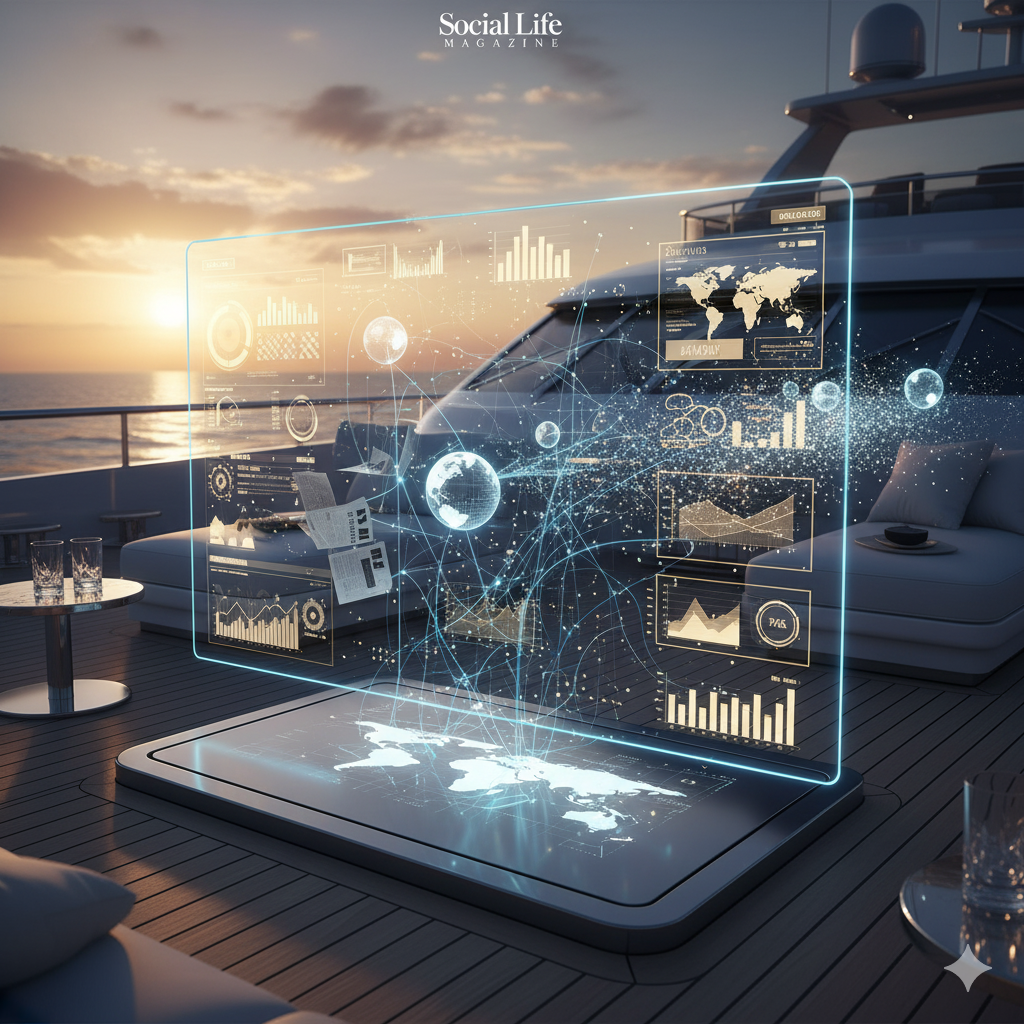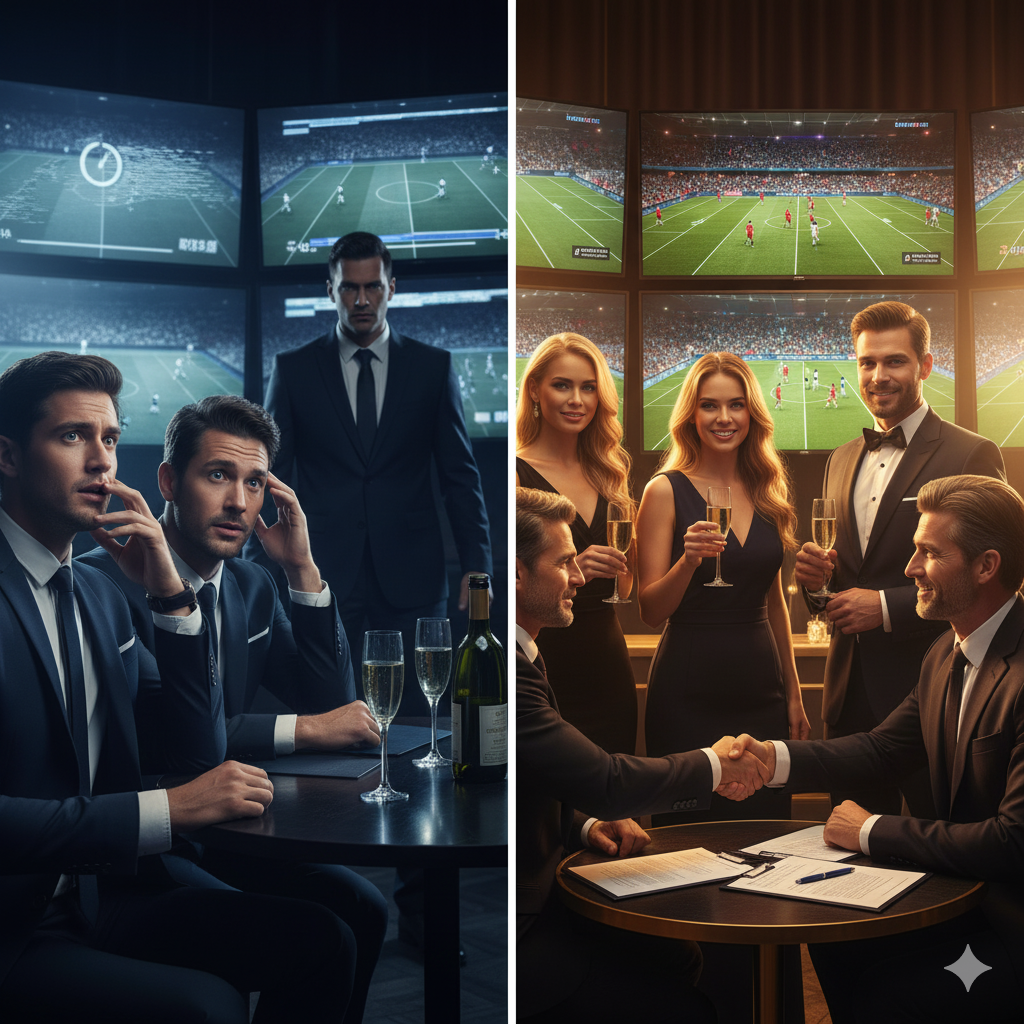Executive Summary: The Urgent Transformation Mandate
The public relations landscape has reached an inflection point. AI-powered media platforms are systematically dismantling traditional PR agency models, creating unprecedented opportunities for those who adapt quickly and existential threats for those who don’t. With 73% of PR professionals now using AI tools to enhance their media relations efforts, the competitive divide is widening rapidly.
Traditional agencies cling to outdated metrics like “potential reach” and “advertising value equivalents” while AI-powered media delivers real-time sentiment analysis, predictive crisis management, and hyper-personalized pitches that achieve 40% higher success rates. However, this disruption creates massive opportunities for luxury brands, high-net-worth individuals, and premium service providers who understand how to leverage these new dynamics.
The most telling statistic: global PR market revenue decreased to $19.5 billion in 2023, down from $20 billion the previous year. Meanwhile, AI-powered media investments reached unprecedented levels, signaling a fundamental shift in how influence and attention are captured and monetized.
The Death Spiral: How Traditional PR Metrics Became Meaningless
Picture this: Your traditional PR agency proudly presents a report showing 50 million “impressions” from a press release. Meanwhile, actual click-through rates hover around 0.3%, and meaningful engagement is virtually nonexistent. This disconnect between vanity metrics and business impact has accelerated the industry’s disruption.
AI-powered media platforms now analyze vast datasets to identify optimal timing, tone, and content angles for each specific journalist. Traditional mass email blasts achieve response rates below 8%, while AI-enhanced personalized pitches reach 40% higher success rates. The gap is widening exponentially.
Furthermore, 72% of organizations have adopted AI compared to earlier years, according to McKinsey’s 2025 research. Those still relying on traditional PR approaches are operating with increasingly obsolete tools in a transformed marketplace.
For luxury brands targeting affluent demographics, this shift represents both challenge and opportunity. AI-powered media can identify emerging wealth concentrations, track shifting lifestyle preferences, and predict which narratives will resonate with high-net-worth audiences before trends become mainstream.
Data Storytelling: The Numbers Behind the Transformation
The disruption isn’t theoretical anymore—it’s measurable. Recent industry analysis shows that 63% of companies include multimedia assets in press releases, yet traditional agencies often lack the AI capabilities to optimize these elements for maximum impact.
Meanwhile, AI-powered media platforms can analyze journalist behavior patterns, preferred communication channels, and response timing with surgical precision. These systems evaluate recent coverage patterns, writing style preferences, and social media engagement to craft pitches that feel personally relevant rather than mass-produced.
Consider the financial implications: The public relations market is forecast to reach $153.18 billion by 2030, expanding at a 7.51% CAGR. However, this growth is concentrated among agencies and platforms that have successfully integrated AI capabilities into their core operations.
The competitive advantage is stark. Companies using AI-powered media strategies report embedding relevant URLs in press releases increases website traffic by up to 77% when picked up by media outlets. Traditional approaches typically generate minimal measurable traffic or engagement.
Models and Terminology: Understanding the New Ecosystem
Generative Engine Optimization (GEO) has emerged as the successor to traditional SEO. Unlike conventional blue-link rankings, GEO focuses on influencing conversational AI systems. Brands must now anticipate user queries and craft content that surfaces in AI-powered search summaries.
Hyper-personalized Media Pitches represent another fundamental shift. AI systems now analyze journalists’ past articles, social media engagement, and response patterns to craft personalized outreach that mirrors their preferred vocabulary and tone. This approach eliminates the spray-and-pray methodology that characterized traditional PR.
Predictive Crisis Simulation allows Fortune 500 companies to run thousands of scenarios based on industry history and market conditions. AI-powered media platforms can identify potential issues before they escalate, providing unprecedented early warning capabilities.
For luxury lifestyle brands, understanding these new models is critical. AI-powered media can identify which journalists are most likely to cover emerging trends in high-end hospitality, exclusive real estate, or luxury goods before these topics reach mainstream awareness.
Real-Time Intelligence: The New Competitive Advantage
Traditional PR operated on yesterday’s news cycle. AI-powered media operates on tomorrow’s. Advanced platforms now provide predictive trend analysis that identifies emerging topics before they peak, giving strategic communicators precious time to prepare thoughtful responses rather than reactive statements.
This shift is particularly valuable for Hamptons-based luxury brands and high-net-worth individuals who need to stay ahead of social and cultural conversations. AI-powered media can track early signals around luxury travel preferences, emerging social status symbols, or shifting attitudes toward exclusive experiences.
Real-time media monitoring now includes sentiment tracking across traditional and social platforms, competitive coverage analysis, and crisis early warning systems. AI tools provide real-time metrics that help PR professionals optimize campaigns instantaneously—something impossible with traditional methods.
The business networking implications are profound. Elite professionals who understand how to leverage AI-powered insights for relationship building and brand positioning will maintain significant advantages over those relying on conventional approaches.
Content Personalization at Elite Scale
Mass communication is dead. AI-powered media enables the creation of highly personalized content variations for different media outlets and audience segments without sacrificing quality or authentic voice. This capability is revolutionary for luxury brands that must maintain exclusivity while reaching diverse affluent demographics.
Advanced implementations create dozens of content variations from a single announcement—each designed to resonate with specific media segments. Healthcare technology stories become different narratives for business publications, investor media, and regional outlets, all while maintaining message consistency and brand authenticity.
For luxury lifestyle brands, this means crafting distinct narratives for different affluent audiences: the newly wealthy tech entrepreneur, the established family office executive, the luxury hospitality investor. AI-powered media can identify which angles resonate with each demographic and optimize accordingly.
The sophistication extends to timing optimization. AI determines optimal pitch timing for individual journalists, improving open rates and response rates significantly compared to traditional mass distribution approaches.
The Authority Architecture: Building Unassailable Credibility
Traditional PR relied on volume and repetition to build authority. AI-powered media builds authority through precision and relevance. By analyzing comprehensive data streams, these platforms help brands appear in AI summaries and conversational search results where their target audiences are increasingly consuming information.
The most successful luxury brands now optimize content so their messaging appears in AI-generated summaries when consumers ask questions about premium experiences, exclusive services, or high-end products. This requires anticipating questions and ensuring brand messaging is clear, distinct, and structured for AI recognition.
Building relationships with journalists remains vital, but now extends to technologists managing SEO strategies, schema markup, and AI attribution systems. AI-powered media requires cross-functional cooperation between traditional PR teams and digital marketing specialists.
For high-net-worth individuals and luxury service providers, this shift represents an opportunity to establish thought leadership that transcends traditional media boundaries. Expert insights tied to brand themes now live in AI knowledge graphs, visible to consumers before they visit websites or engage with traditional marketing materials.
Crisis Management Revolution: From Reactive to Predictive
Traditional crisis management was inherently reactive. AI-powered media has made it predictive. Sophisticated algorithms process information from multiple channels to provide early warnings about potential issues before they become actual crises. This predictive capability gives organizations unprecedented risk mitigation tools.
AI-driven early warning systems can detect subtle patterns or emerging trends that might escalate into reputation threats. For luxury brands serving high-net-worth clientele, maintaining pristine reputations is paramount. AI-powered media monitoring can identify potential issues in their infancy, allowing for proactive rather than reactive responses.
The rapid response capabilities are equally transformative. Using platforms with custom AI enhancements, professionals can identify breaking news opportunities within minutes rather than hours—often securing commentary placement while competitors are still crafting responses.
This speed advantage is particularly valuable in luxury markets where timing and exclusivity create significant competitive moats. Being first to market with thoughtful commentary on emerging trends can establish authority and capture attention that translates directly into business opportunities.
Measurement That Matters: Beyond Vanity Metrics
The most significant transformation in PR is happening in measurement and analytics. AI-powered media provides unprecedented insights into campaign performance and business impact, moving far beyond traditional metrics that offered little actionable intelligence.
Modern measurement includes message penetration analysis, sentiment evolution tracking, attribution modeling connecting PR activities to lead generation and sales, and competitive share of voice analysis with automated insight generation. These capabilities allow continuous campaign optimization based on actual performance data rather than assumptions.
For luxury brands, this precision is invaluable. Understanding exactly which messages resonate with affluent audiences, which channels drive high-value inquiries, and which narratives convert prospects into clients transforms PR from expense center to revenue driver.
Predictive outcome modeling can forecast the likely impact of different PR approaches before implementation, allowing strategic resource allocation and risk mitigation. This data-driven approach represents a fundamental shift from the intuition-based decisions that characterized traditional PR.
The Implementation Playbook: Strategic Steps for Adaptation
Organizations seeking to leverage AI-powered media opportunities must approach implementation strategically rather than tactically. The most successful adaptations focus on value creation and competitive differentiation rather than technology adoption for its own sake.
Begin by auditing current PR processes to identify high-value opportunities for AI enhancement. Define specific objectives for implementation rather than vague goals. Evaluate available tools against unique requirements and budget constraints. Start with pilot projects in one area before expanding to full implementation.
Develop clear metrics to evaluate AI impact on PR outcomes. Create ethical guidelines for AI use in communications. Invest in team training to ensure effective human-AI collaboration. Remember that successful implementation is an ongoing journey requiring regular reassessment of tools and approaches.
For luxury brands and high-net-worth service providers, the focus should be on platforms that enhance relationship building with affluent audiences rather than mass market solutions. AI-powered media tools should amplify exclusivity and authenticity rather than dilute these essential luxury brand attributes.
The Competitive Moat: Why Acting Now Creates Lasting Advantage
The window for competitive advantage through AI-powered media adoption is narrowing rapidly. Early adopters are establishing significant leads in audience engagement, media relationships, and brand authority that will be difficult for late adopters to overcome.
Consider the network effects: As AI systems learn from successful interactions, they become more effective at predicting and optimizing future outcomes. Organizations that begin training these systems now with their unique brand voices and audience preferences will maintain ongoing advantages over competitors who delay implementation.
The luxury market context makes this urgency even more pronounced. Affluent consumers expect sophisticated, personalized experiences across all touchpoints. Brands that continue relying on traditional PR approaches will appear increasingly outdated compared to those delivering AI-enhanced precision and relevance.
Moreover, 92% of businesses plan to increase their AI investments this year, according to McKinsey research. The competitive landscape is shifting rapidly, and maintaining market position requires immediate action rather than extended planning cycles.
The Strategic Mandate: Transformation, Not Optimization
The evidence is overwhelming: AI-powered media represents fundamental transformation rather than incremental optimization. Organizations that approach this shift as minor adjustment rather than strategic reinvention will find themselves systematically disadvantaged in increasingly competitive markets.
For luxury brands, high-net-worth service providers, and premium lifestyle companies, the implications extend beyond operational efficiency. AI-powered media capabilities enable new forms of relationship building, audience engagement, and brand positioning that were previously impossible or prohibitively expensive.
The path forward requires bold leadership, strategic investment, and commitment to ongoing adaptation. Organizations that embrace this transformation will establish competitive moats that compound over time. Those that resist or delay will find themselves competing with increasingly obsolete tools in rapidly evolving markets.
The choice is clear: evolve with AI-powered media or become irrelevant. For those ready to win, the opportunities have never been greater.
Ready to Dominate with AI-Powered Media Strategy?
Transform Your Brand’s Media Presence: Submit your luxury brand story or advertising inquiry to Social Life Magazine and discover how elite publications leverage AI-powered content strategies.
Stay Ahead of the Curve: Subscribe to exclusive event invitations and insider insights for the Hamptons’ most influential networking opportunities.
Join the Elite Circle: Subscribe to Social Life Magazine’s print edition and access the luxury lifestyle intelligence that drives decision-making among high-net-worth audiences.
Network at the Highest Level: Secure your Polo Hamptons 2026 tickets, cabanas, and corporate sponsorships where AI-powered media strategies meet traditional luxury networking in the most exclusive setting.







